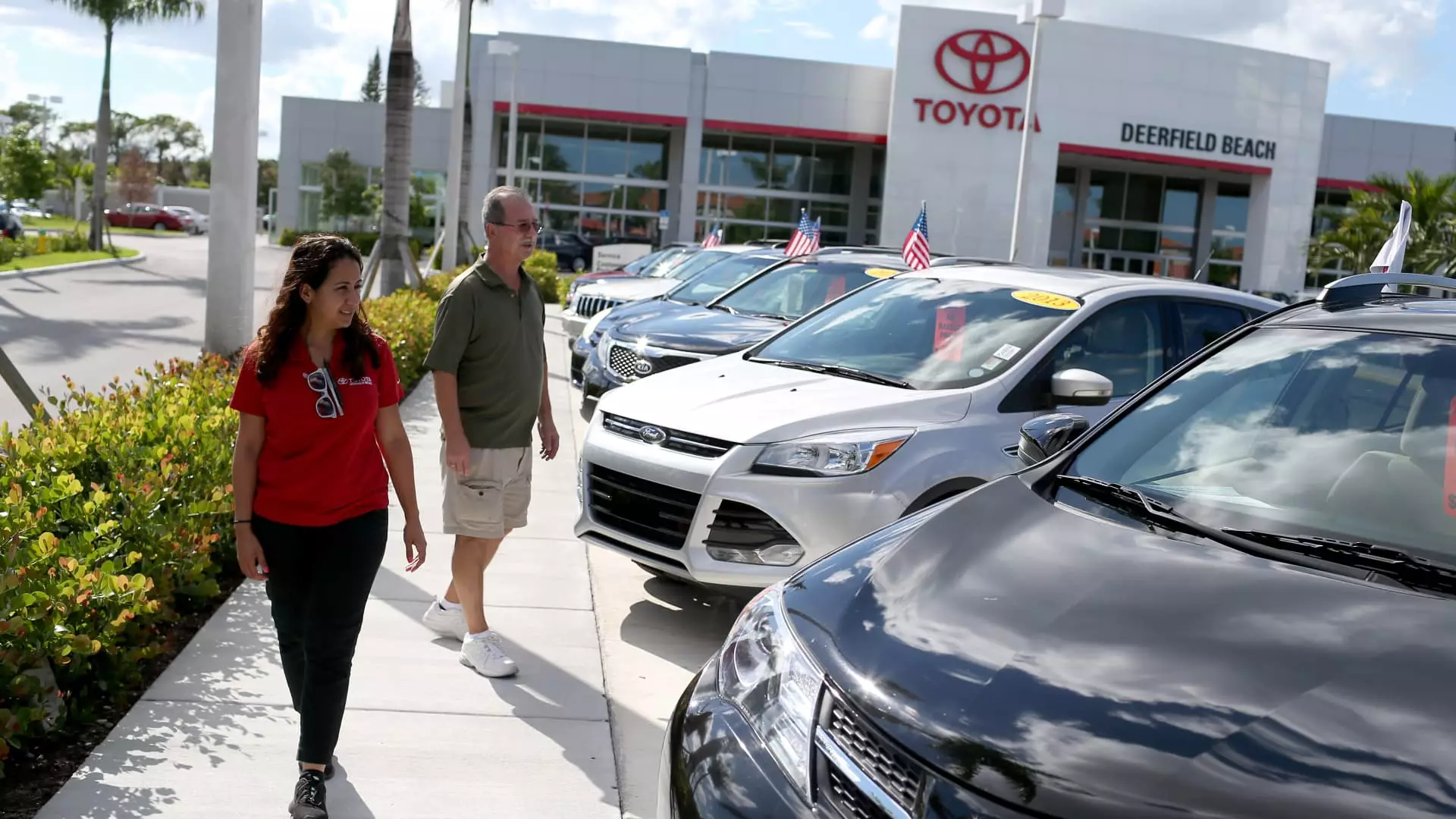The automotive market in the United States is at a tipping point. The tidal wave of President Donald Trump’s 25% auto tariffs is set to reshape the landscape for both new and used vehicles significantly, inflicting a steep cost burden on everyday Americans. As these tariffs hit the automotive sector, an assortment of unpredictable consequences threatens to rip through both the supply chain and consumer wallets. The complexity of this situation calls for a deeper examination of what these tariffs truly mean for the American consumer—primarily the mounting costs and shaky market conditions they induce.
Rising Costs: A Foreboding Future for Car Buyers
The immediate impact of the tariffs should not be underestimated. Experts from Cox Automotive predict that average costs for imported vehicles will see an alarming increase of approximately $6,000. Vehicles manufactured within the U.S. are not exempt either; they are likely to rise in price by as much as $3,600 due to new tariffs on auto parts. Even the most hopeful consumer must wonder: are these price hikes merely the beginning? With the tariffs being a direct cost passed on to consumers, the traditional expectation of discounting and promotional sales seems to be evaporating. Instead, we face a reality where car buyers will have to tighten their belts significantly.
This scenario dramatically shifts the auto buying landscape. For many, purchasing a vehicle is a pivotal life decision that often involves long-term financing. The threats posed by these increasing prices are no small matter; for middle-class families, such an inflating market means reassessing what they can realistically afford, pushing dreams of new cars into the background.
The Ripple Effect: Used Car Prices on the Rise
While it might seem that used vehicles shouldn’t be directly affected by new tariffs, the reality is deep-rooted in the interconnectedness of the automotive market. The anticipated price surge does not merely halt at new vehicles; instead, used cars are also likely to experience a notable uptick. According to Cox, the wholesale prices of used cars are expected to rise between 2.1% and 2.8%—a stark increase from a previously stable forecast. The average price of a used vehicle was approximately $25,000 in mid-March. This newfound volatility will force many consumers to reconsider their purchasing decisions entirely.
For a society that increasingly relies on used cars as an affordable alternative, this pricing surge signals a troubling trend toward further financial exclusion. With the influx of automobiles that were once affordable now falling into the category of “premium pricing,” everyday Americans are left to ponder what options remain viable. The sense of security in the used car market is eroding, and with it, the confidence of potential buyers is also waning.
Automakers Respond: A Mixed Bag of Strategies
The automotive industry finds itself grappling with the weight of new tariffs in diverse ways. Some manufacturers, primarily domestic ones like Ford and Chrysler, have attempted to placate consumers with temporary employee pricing options. However, foreign manufacturers such as Jaguar Land Rover have taken more drastic measures, halting imports entirely. This dichotomy raises questions about the stability of the domestic auto industry amid such uncertainties.
In the face of an impending price spike, companies are stuck between a rock and a hard place. They may attempt to absorb some cost increases; however, the prevailing sentiment remains that these tariffs are designed to be a burden borne by consumers. Thus, it is crucial for consumers to be aware of the strategies employed by manufacturers and how these may, in turn, affect vehicle availability and pricing.
A Market in Turmoil: Unpredictability Abounds
Market volatility is palpable. The automotive industry is more than just the exchange of goods; it’s a reflection of consumer sentiments and market perceptions. As economic uncertainty looms, the wavering demand could very well lead to diminished production levels, which complicates matters further. No one can accurately predict the next chapter of this unfolding saga. Are we bound for another market crash akin to what we witnessed during the COVID-19 pandemic? The apprehension exists, and leaders within the automotive sector voice concerns that we may not be fully prepared for the shocks yet to come.
In a market marred by unpredictability, those involved—be it dealers, suppliers, or everyday consumers—find themselves at odds with an ever-tightening situation. The various factors of diminishing consumer confidence, inconsistent pricing, and rising costs create a cocktail of chaos that few have the tools to navigate effectively. Rather than being a temporary challenge, these tariffs seem to reveal deep-rooted vulnerabilities in the American automotive sector.
With tariffs reshaping the automotive landscape, Americans must summon both pragmatism and vigilance as they choose their paths forward. The inevitable consequences of these tariffs warrant thorough contemplation and adaptive strategies among consumers and industry players alike.

